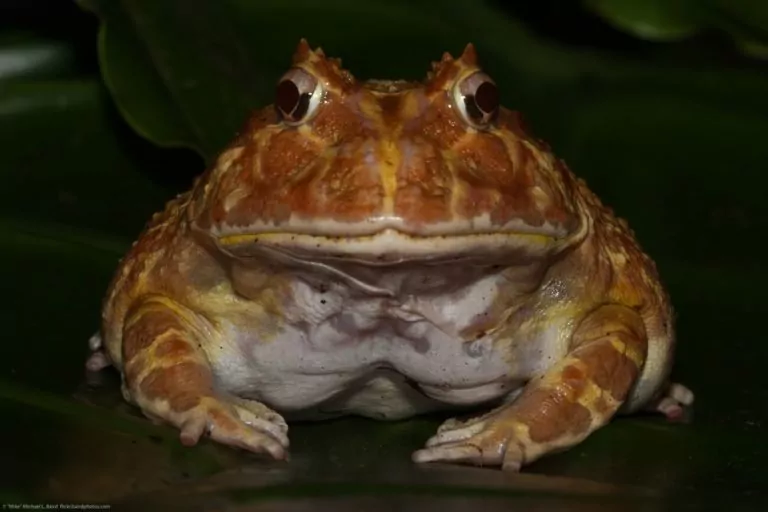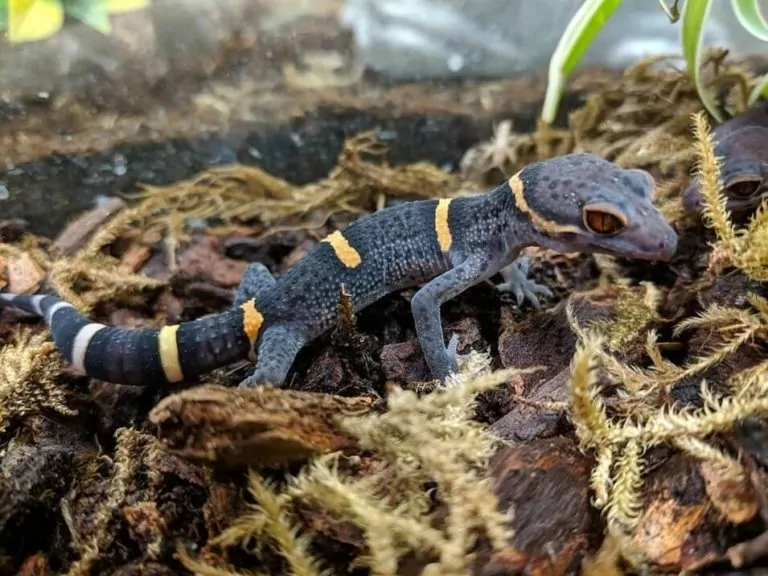Rosy boas are beautiful pet snakes that are quite easy to care for. Because of this, they’re a very popular species among beginners (and the snake-loving community in general).
This guide will teach you everything you need to know about rosy boa care, plus some additional facts to help you better appreciate your pet. You’ll learn about their diet, ideal habitat setup, size, lifespan, and much more!
Table of Contents
Species Summary
Found in parts of California, Arizona and Mexico, the rosy boa (Lichanura trivirgata) is one of two species of boa constrictors that are native to the United States.
The rosy boa is considered to be a great pet snake for beginner owners because it has a nice, docile temperament that makes it easy to handle.
Expert Tip: It’s very important to buy a rosy boa that’s been bred in captivity. Buying a live-caught rosy boa from a disreputable dealer can end up costing you a substantial fine.
Appearance & Colors
The coloration of the rosy boa tends to vary slightly from region to region. The base color of this boa can be light gray, tan or cream.
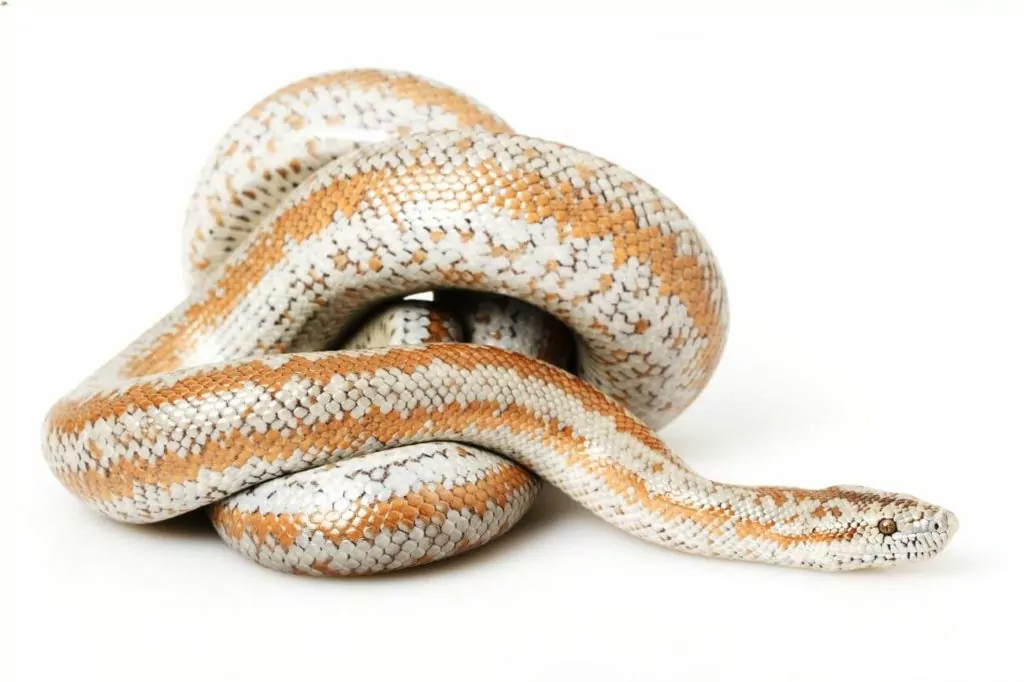
Depending on where it’s from, the rosy boa will also have stripes of maroon, orange, brown or black. The combination of body color and stripes is often a good indication of the regional origin of the snake.
However, there is one constant between all the different location-based variations. All rosy boas have a pinkish belly, which is where they get their name.
Average Rosy Boa Size
The average rosy boa size is between 24 and 36 inches in length at maturity. However some rosy boas have been known to reach 48 inches!
This size means these snakes are considered medium-sized, which makes them fairly owner-friendly. You can usually find room for them in just about any home situation!
Expert Tip: Females tend to be slightly larger than males, but they are still within the average size range. Hatchlings are about 10 inches long at birth.
Lifespan
The typical lifespan of a rosy boa can reach up to 30 years. This assumes consistent and high-quality care.
Their potential lifespan makes this species a great snake for anyone who wants to establish a long-term relationship with their pet. You’ll be able to build quite a strong bond with them over this time!
Rosy Boa Care
As we mentioned earlier, rosy boa care is not very challenging. That makes them a great choice for beginners (or experts who want a low-maintenance snake).
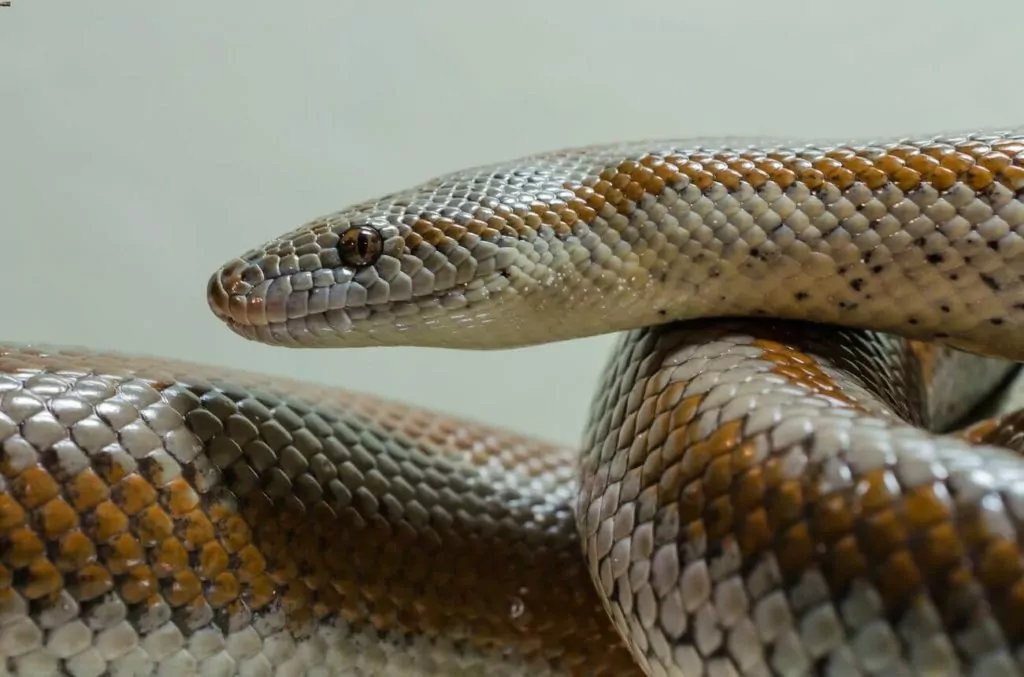
But it’s still important to understand the primary care and habitat requirements of this species. Rosy boas have quite specific temperature and humidity requirements, so providing them with an enclosure that maximizes their health and comfort is going to be critical.
They also need an enclosure that is the appropriate size and that has enhancements to provide places to bask and burrow. To prevent a number of potentially serious health issues, the enclosure should be deep cleaned often.
Read the sections below to learn how to provide the rosy boa with proper care.
Tank Size
The enclosure that you create for your boa should be a place where it will feel comfortable and secure, and using the right size of enclosure plays a critical role.
If you have hatchlings, it’s perfectly alright to start them in a small container that has holes in the top. As your rosy boa gets bigger, you can transfer it to a tank that is about the size of a shoe box.
Juveniles do very well in a glass 10-15 gallon tank, and adults should be in an enclosure that’s between 20 and 30 gallons.
Expert Tip: Because your boa can feel stress if it’s in a tank that’s too big, it’s best to stick to the suggested enclosure size. This is not a situation where bigger is better.
Providing an escape-proof enclosure is an absolute must. This is because your rosy boa (as is its nature) is going to be constantly searching for a way to escape.
Lastly, make sure that the top of the enclosure is smooth and doesn’t have any jagged edges. While looking for an escape route, your rosy boa will rub its nose around the enclosure. Rubbing on a rough or uneven area can cause damage to the rostrum.
Habitat Setup
Taking your rosy boa’s temperament into consideration is going to help you create the perfect habitat for your pet.
Rosy boas like to burrow and hide, so they are going to appreciate tank enhancements such as reptile caves, hides, large pieces of driftwood, logs or rocks.
It’s a good idea to place hides or caves on both sides of the enclosure. Adding logs or driftwood to the warmer side of the enclosure will give them a perfect place to bask.
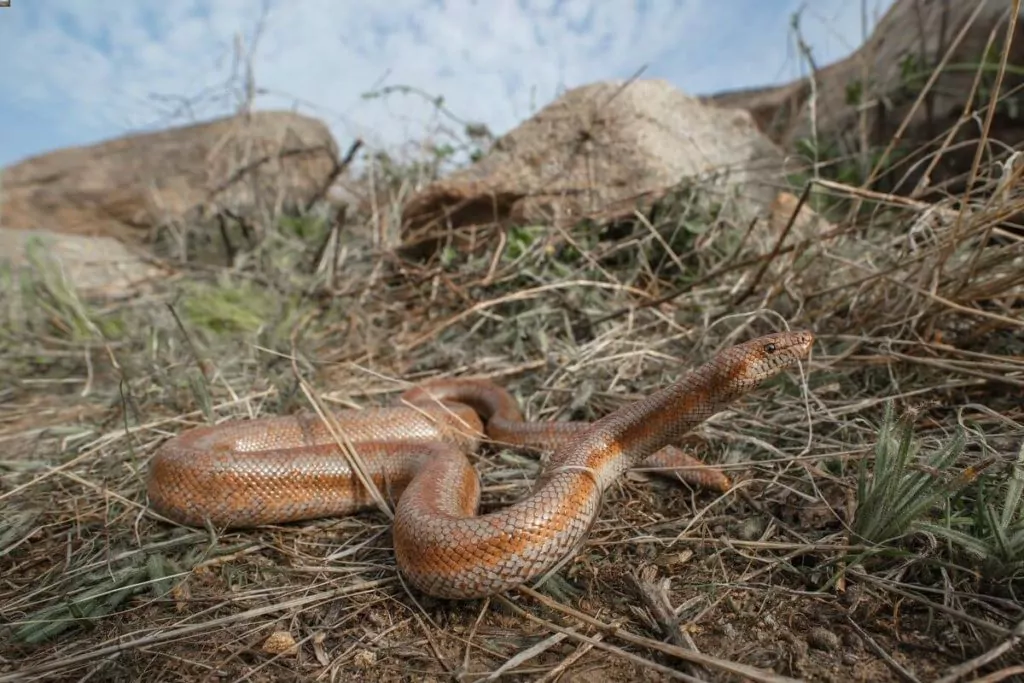
Choosing an appropriate substrate is quite important because the rosy boa is a burrower and enjoys having a nice, clean place to burrow down in. Paper towels, newspaper or Aspen shavings work pretty well.
Expert Tip: You should never use aromatic shavings like cedar or pine. The oils in the wood are not good for the snake.
The substrate should be a couple of inches thick, and you’ll need to spot clean it often. Because rosy boas are very susceptible to bacteria caused by a dirty substrate, it should be completely replaced six to seven times each year.
Doing this will help ensure the health and longevity of your pet.
Temperature & Lighting
When you are setting up your rosy boa’s enclosure, you’ll need to decide how you are going to maintain a consistent temperature gradient. This entails creating a warmer side for basking and a cooler area for when your boa needs to bring down its body temperature.
Setting up a temperature gradient is not difficult, and just requires a bit of planning. We recommend using a 75 watt basking bulb as well as heat tape to create the proper temperature gradient.
The first number to know is that you need to maintain an ambient temperature of 80-85 degrees Fahrenheit within the enclosure.
Because the basking side of an enclosure has to be warmer than the ambient temperature, this area should remain around 90-95 degrees Fahrenheit.
Expert Tip: The cooler side can drop as low as 65 degrees Fahrenheit at night.
Always connect a thermometer to the tape to ensure that the proper temperature is being maintained. Remember: the heat tape should only be used under the basking side of the enclosure and can be adjusted as needed.
Rosy boas don’t have very specific lighting requirements. However, using a UVA/UVB bulb in the enclosure may enhance their immune system. If you do opt for one of these bulbs, place it on the basking side of the tank.
Humidity
Rosy boas don’t do very well in environments with a high humidity level, so the humidity level in the enclosure is going to need to remain around 40 percent. However, it’s alright to let the humidity level go slightly higher (60 percent max) if your pet is shedding.
To maintain humidity in the enclosure, you should mist the tank with warm water twice a day. Damp sphagnum moss can help add humidity as well.
Using a hygrometer will let you keep an eye on humidity levels. Checking it will become part of your daily routine.
Water
Your rosy boa should not need water more than once a month, so no continual water source is necessary. A small dish with water is sufficient, and all spills should be cleaned up right away.
Never give your rosy boa water right after it has eaten. This is very bad for digestion and may cause it to regurgitate its meal.
Food & Diet
Feeding your rosy boa can be a bit of a tricky undertaking. Knowing the correct type and size of food and understanding what to do if your boa won’t eat are very important points to understand.
There is a debate among rosy boa experts as to whether it’s better to feed boas live prey or pre-frozen prey.
Live prey proponents claim that giving live prey mimics how a boa feeds in the wild. While this may be true, live prey can be harmful to your rosy boa in a tank environment. Most live prey will not go down without a fight, and your boa can be scratched or bitten. Believe it or not, your snake can become very upset from an attack, and it may stop eating.
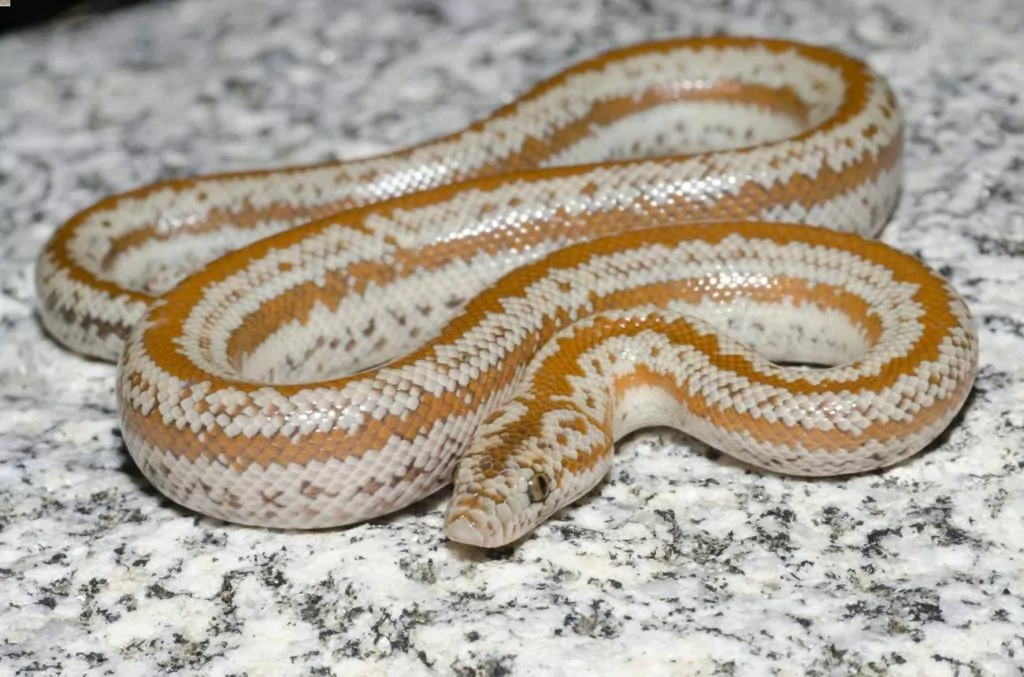
We suggest feeding your rosy boa frozen and thawed mice. Rats or day old chicks can also be given on occasion.
Hatchlings should be given pinky mice, juveniles can graduate to fuzzy mice, and adults should get hopper mice. Just make sure that the prey is the same width as the widest part of the boa. Trying to feed it prey that is larger can result in serious health issues.
For the best success, it’s good to feed according to the following general schedule based on age:
- Hatchlings can feed once a week.
- Juveniles should follow the same schedule as hatchlings.
- Your adult boa will only need to eat two to four times per month.
If your rosy boa is not eating properly, you can try putting it into a temporary period of brumation. Brumation is a kind of hibernation that some experts use to get their rosy boas to eat.
It basically entails lowering the temperature of the enclosure to 50-60 degrees Fahrenheit for a month. After the enclosure warms up again and the snake is out of brumation, it can be started on fuzzy mice until feeding gets back to normal.
Expert Tip: This brumation technique should only be tried if you’re absolutely convinced your rosy boa will not eat otherwise. Don’t rush into this!
Potential Health Issues
A healthy rosy boa can live for up to 30 years. In order to maintain the health of your pet, you are going to need a working knowledge of the potential health issues that can occur.
Some common rosy boa health issues include:
Respiratory infections: These are rather common for rosy boas and other reptiles. This type of infection can be caused by the wrong humidity, low temperatures or poor substrate quality.
Parasites: Internal parasites can be a real problem for rosy boas, so fecal tests by your veterinarian are very important. Regular testing can keep these parasites from getting out of control.
Snake mites: This is an issue that can often be avoided by keeping the enclosure scrupulously clean.
Scale and mouth rot: These stem from a poor substrate or from improper humidity or temperature levels.
Behavior & Temperament
The rosy boa belongs to a group of snakes that squeeze (aka constrict) their prey. This is different from other snakes that use a venomous bite to kill their prey.
This species is known for its nice, even disposition that makes it popular with pet snake owners. They love to burrow and hide and can often be seen curled up in a snug hiding spot!
When frightened, the rosy boa will ball itself up and may emit a bad smelling musk. This boa is not known to bite, but it may do so at meal time due to its feeding response.
Handling
The nice thing about rosy boas is that they don’t mind being handled (as long as the handling is done properly). Always use two hands to hold your boa, and never squeeze or restrain it roughly.
Expert Tip: It’s important not to handle your rosy boa right after it eats as this can cause regurgitation.
Being gentle is the key to handling these snakes, and we suggest touching it lightly with an inanimate object before you pick it up. Over time, your snake will realize that this type of touching means that it’s not going to be fed, and the chance that you’ll be bitten (because of their feeding response) is greatly reduced.
Patience and respect are important if you want to have a snake that will tolerate, and even enjoy, being held and handled!
Conclusion
Rosy boa care is nothing to be scared of. These pet snakes are very beginner-friendly, and can be kept by pretty much anyone.
As long as you have their best interest at heart and are willing to give them (and their habitat) consistent attention, you’ll do just fine.
If you have any questions about information we covered in this care sheet feel free to let us know. We love hearing from our readers!

